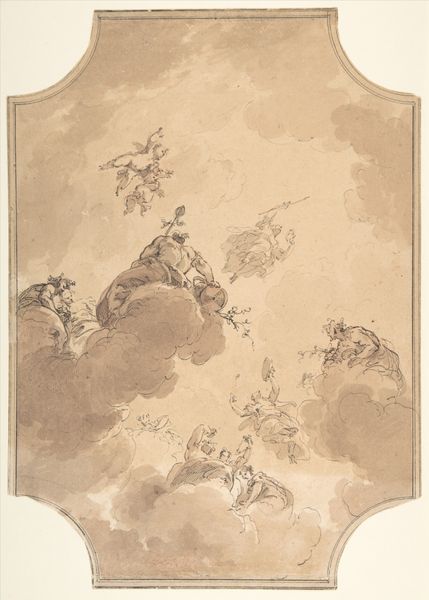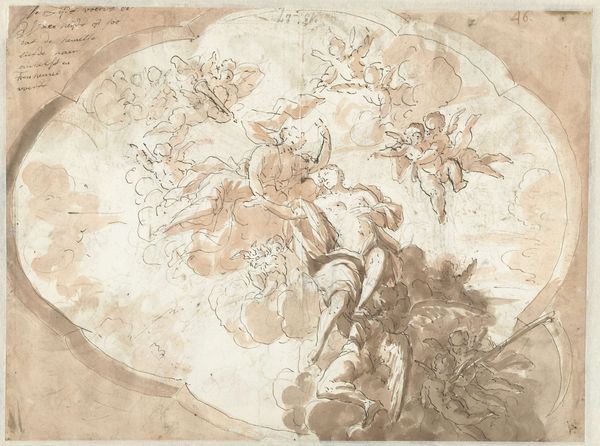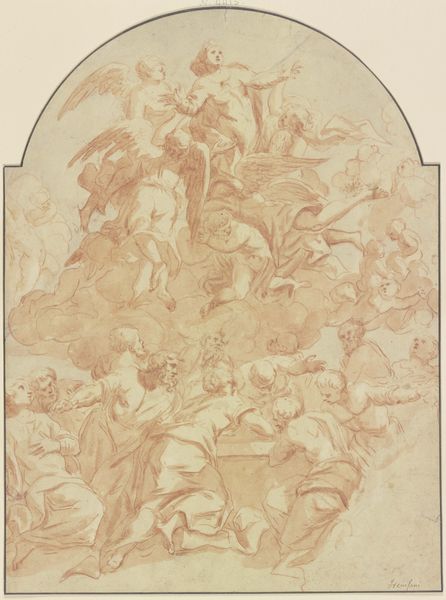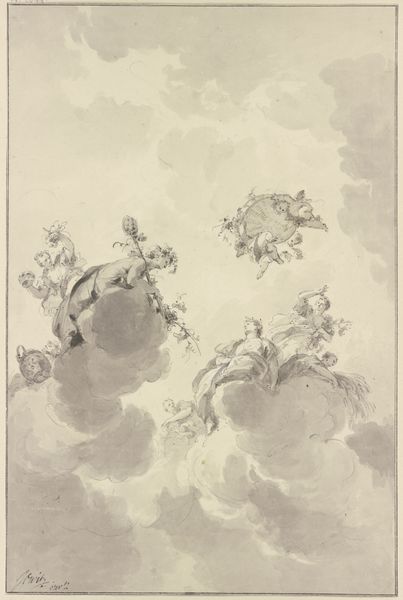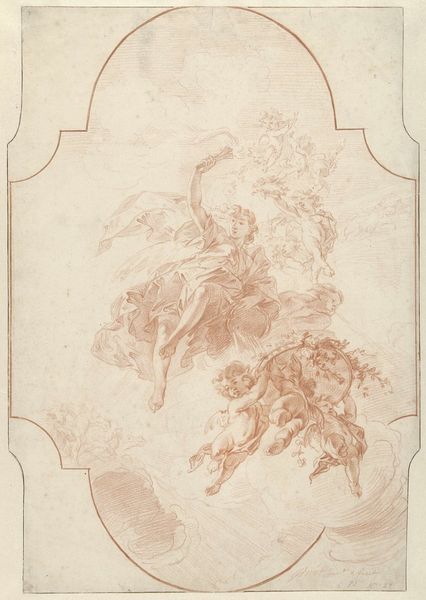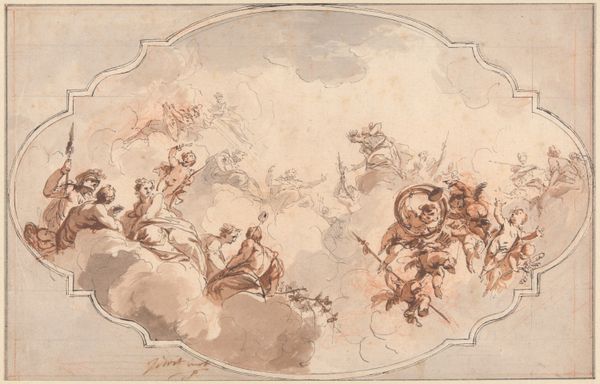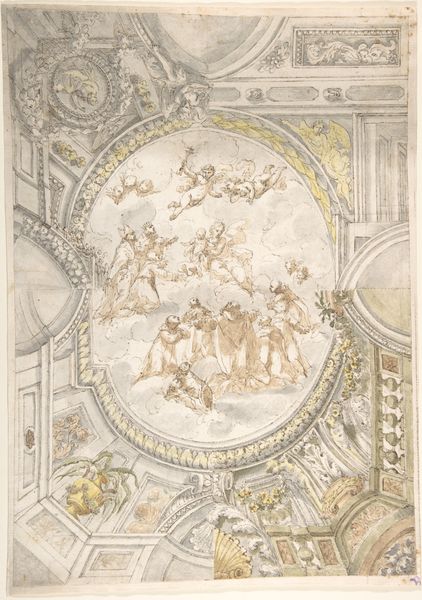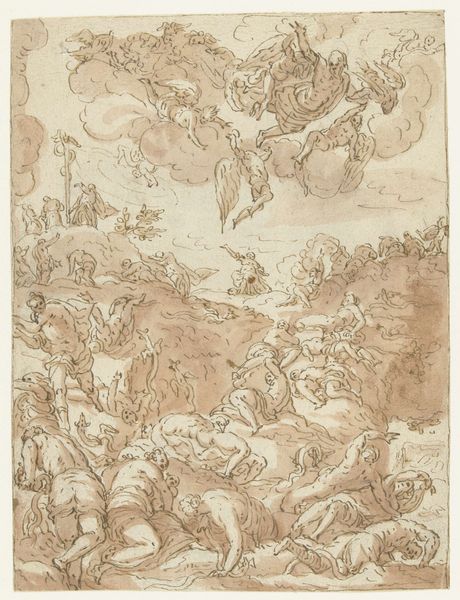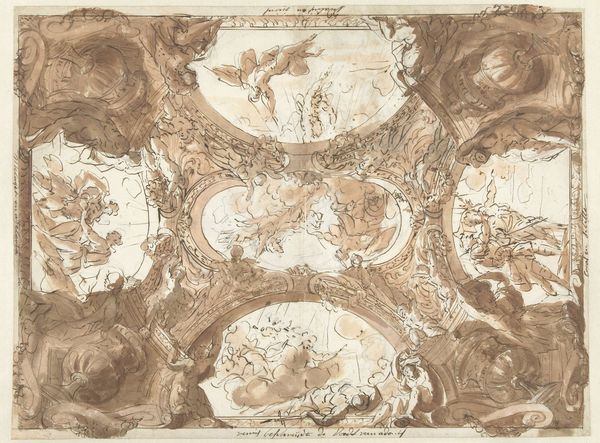
Ontwerp voor een plafondschildering met de apotheose van Hercules en vier van zijn werken 1746
0:00
0:00
drawing, paper, fresco, watercolor, ink, pendant
#
drawing
#
allegory
#
baroque
#
figuration
#
paper
#
fresco
#
watercolor
#
ink
#
line
#
history-painting
#
watercolor
#
pendant
Dimensions: height 514 mm, width 354 mm, height 410 mm, width 332 mm
Copyright: Rijks Museum: Open Domain
Curator: Jacob de Wit, in 1746, created this wash and ink drawing on paper entitled, "Ontwerp voor een plafondschildering met de apotheose van Hercules en vier van zijn werken," or "Design for a ceiling painting with the apotheosis of Hercules and four of his labors." Editor: Apotheosis is right! The swirling clouds and figures give a tremendous sense of soaring—very much what one would want from a ceiling painting. The monochromatic wash feels light and airy. Curator: Precisely. De Wit’s mastery lies in using line and wash to create a convincing illusion of depth and volume. Observe how the artist meticulously arranges the figures in a circular composition, guiding the viewer's eye upward, contributing to its ethereal quality. Editor: Yes, and this wasn’t simply tossed off as an exercise—you can see clear material links to fresco painting in the handling of the medium, no? These were essentially industrial designs, preparing skilled laborers to reproduce at a much larger scale. Curator: A compelling point. Note how the corner details act as visual anchors, framing the central scene. We are observing a study, but not a study in the modern sense; de Wit sought a balance between idealized form and dynamic movement. The classical subject matter, treated with Baroque flair, speaks to a specific intellectual and artistic climate. Editor: Baroque flair, definitely, but those laborers still had to hoist the paint, mix it, and work with demanding materials. It is an interesting reminder that artistic triumph relied on skilled, but mostly nameless, craftsmen who put this grand vision into reality. Curator: Indeed. The drawing, on its own, is more than just preparation. The ink wash allows for tonal modulation impossible to replicate faithfully. De Wit’s drawing is an opportunity for art historical investigation. Editor: So, beyond questions of taste and aesthetic intention, this work provides unique material testimony regarding artistic production of the era. It provides real access to the collaboration of artists and artisans. Thank you for helping to focus the context for the viewer!
Comments
No comments
Be the first to comment and join the conversation on the ultimate creative platform.
